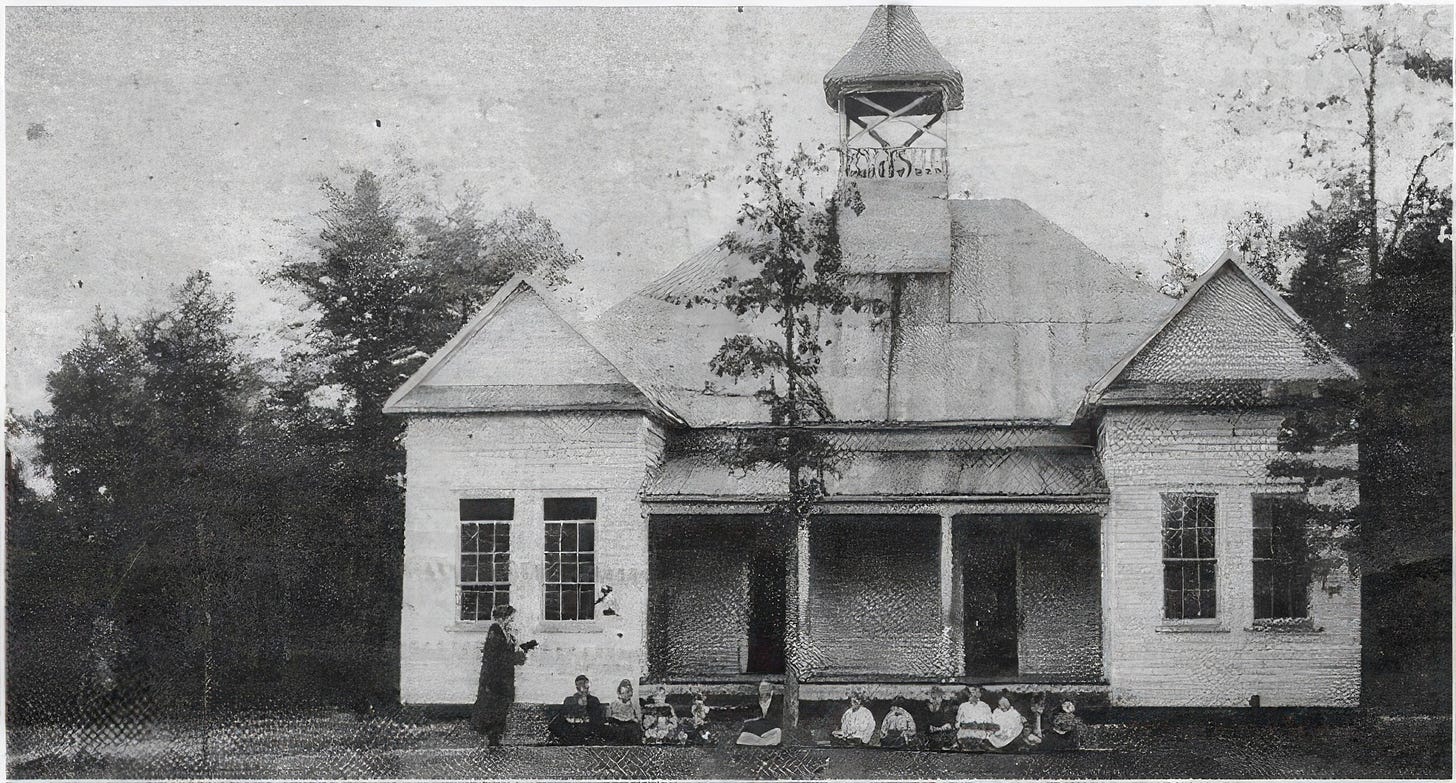You’re reading “Echoes in Time,” a weekly newsletter by the Independent Herald that focuses on stories of years gone by in order to paint a portrait of Scott County and its people. “Echoes in Time” is one of six weekly newsletters published by the IH. You can adjust your subscription settings to include as many or as few of these newsletters as you want. If you aren’t a subscriber, please consider doing so. It’s free!
Today’s newsletter is sponsored by the Scott County Chamber of Commerce. Since 1954, the Scott County Chamber of Commerce has advocated for a strong community by supporting stronger infrastructure and leadership.
The origin of the name ‘Helenwood’ remains unknown
Today, little remains of the little town of Helenwood. After efforts at incorporation were struck down in court a generation ago, Helenwood is little more than a place name for all of the unincorporated area between Huntsville and Oneida … and it is being chewed up by the slow sprawl of those two towns, whose urban growth boundaries actually meet along U.S. Highway 27.
But the former Helenwood Main Street is still called Main Street, the Baptist church that once stood in the middle of town is still there, and Helenwood lives on in the minds of many who remember it when it was still one of the most happening places in Scott County.
Founded as a railroad town, Helenwood owes its existence to the building of the Cincinnati-Southern Railroad in the 1870s — much like another long-gone town further down the line (Glenmary), and one that sprung up and stayed a little further up the line (Oneida). Helenwood was the site of a depot when the Cincinnati-Southern was built, and coal was soon after discovered nearby at Sulpher Creek.
As the town sprang up around the tracks, it gained a reputation for being one of the most rough-and-tumble communities along the Southern Railroad. There were several saloons in the town, and a number of people were killed in those saloons through the years. The most infamous of these incidents was the killing that sparked the Cecil-West feud in the 1880s. In 1905, a well-known local law student who was a standout athlete at the University of Tennessee, Sam Young Parker, son of county judge James C. Parker, was murdered at the Helenwood depot, though his killing had nothing to do with the saloons around town.
So how did Helenwood get its name? There are conflicting stories.
Perhaps the most widely-known story of Helenwood’s namesake comes from the National Park Service. In a story on the Big South Fork’s website, the federal agency links the name to the April 5, 1935 dynamite explosion that damaged several buildings in town.
“Helenwood had become a disturbed town in the 1900s,” the article reads. “It received its name from a blazing explosion. There had been dynamite stored that was somehow ignited. The townspeople called the tragedy ‘Hell in the Woods,’ which is what Helenwood’s name was formed from.”
The dynamite explosion very much happened, but it isn’t how Helenwood received its name. The town was called Helenwood for many years before April 1935.
In fact, a Knoxville newspaper referenced the name Helenwood after the Christmas Eve shooting at a saloon in 1881 that killed 17-year-old John W. Cecil (his killer, his 24-year-old uncle, Crusoe West, was later killed by Cecil’s father and brothers in an act of vengeance). Newspapers again referenced the name Helenwood after subsequent killings that played out in the Cecil-West feud, and again after Sam Parker was gunned down at the train station in 1905.
There are plenty of other references to Helenwood in various Tennessee newspapers in the early 1880s, as well. An ad for the Chattanooga Coal & Wood Yard in the Chattanooga Daily Times in December 1881 references both Helenwood and Glen Mary. And, interestingly, there’s a note in the same newspaper in February 1880 stating that a petition was circulating to “change the name of the Helenwood depot to Huntsville Station,” because it was the nearest station on the railroad to the county seat. (That effort apparently failed.)
So this little railroad town was called Helenwood more than 50 years before the 1935 dynamite explosion occurred, though exactly when the name Helenwood began to be used is difficult to ascertain.
Helenwood was originally called Homestead, dating back to July 1859 when it was lotted off. Writing for the FNB Chronicle in 1991, Kathleen West Robbins — whose father, Lawrence West, grew up in old Helenwood — recalled that the town was surveyed in 50 ft. by 200 ft. lots, including a plot for a school, a plot for a church, and a plot for a town square. According to Robbins, this is also when the Cut Cemetery was designated.
Robbins wrote in 1991 that there were two conflicting stories about how the town got its name.
“Some say it was named for a Captain Wood’s daughter, Helen, and some say it was because of the rough and rowdy escapades of the saloon days when it was called ‘Hell - In - The - Woods’,” she wrote.
The first post office opened at Helenwood in 1880, and it was around that same time that the first mentions of “Helenwood” start to show up in historical documents. Therefore, it seems likely that the name Helenwood came from the post office. Many of Scott County’s communities were named after the post offices that served them … and, in many of those cases, pre-existing names of the communities changed when the post offices opened. For instance, Norma was once known as Skull Bone until the post office opened and the name changed. However, why the post office at Homestead would have been called Helenwood remains a mystery.
Regarding the theory that it was named after a Helen Wood, census records show that only one Woods family lived in Scott County in 1880, but they resided in the Straight Fork area (Nancy Woods and her children, James, Nancy, Benjamin and Stephen). As for the theory that the name was derived from “Hell in the Woods” because of the town’s rowdy saloon reputation, the first saloons opened in Helenwood at about the same time as the post office — around 1880 — and all were timed with the start of rail traffic on the Cincinnati-Southern, which was completed in 1880.
Thank you for reading. Our next newsletters will be Threads of Life on Wednesday and The Weekender Thursday evening. Want to update your subscription to add or subtract these newsletters? Do so here. Need to subscribe? Enter your email address below!
◼️ Monday morning: The Daybreaker (news & the week ahead)
◼️ Tuesday: Echoes in Time (stories of our history)
◼️ Wednesday: Threads of Life (obituaries)
◼️ Thursday evening: The Weekender (news & the weekend)
◼️ Friday: Friday Features (beyond the news)
◼️ Sunday: Varsity (a weekly sports recap)




